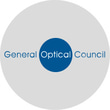- OT
- Professional support
- Optical organisations
- What are the implications of AI for professional standards?
What are the implications of AI for professional standards?
GOC standards manager, Natalie Michaux, explores three areas for eye care practitioners to consider

27 June 2019
Artificial intelligence (AI) is everywhere: from asking Alexa for the headlines to hailing a taxi with a ride-share app, we can’t escape it. Things are possible that weren’t before – and it’s not just within our personal lives. The possibilities for eye care are ever-expanding, too, as evidenced by the collaboration between Google DeepMind and Moorfields Eye Hospital. Over a million eye scans were examined and, as a result, an algorithm has been developed that can detect early signs of age-related macular degeneration (AMD) and diabetic retinopathy. In High Street practice, optical coherence tomography (OCT) is becoming increasingly commonplace and auto-refraction is actively being used in primary care in other countries.
There seems to be two camps in the sector now: one is a bit apprehensive of technology and the effects it may have; the other is keen to embrace it as much as possible. One thing the groups have in common is the need to think about how they can make sure they ensure patient safety when using technology in accordance with the Standards of Practice. As is true in most cases, keeping up with the Standards of Practice is easy if you give it some thought – and doing so in relation to technology and AI is no exception. Here are the GOC Standards team’s three top tips for practitioners to think about:
1. “Communication is always key”
Patients rightly expect good communication from healthcare professionals so that they can understand what’s happening to them and be able to make decisions about it. If part of their care or treatment is to be provided by a machine instead of a person, for example, providing a bit more information than usual about what to expect, in a way that the patient understands would be sensible. Remember that under 2.2 of the Standards of Practice it is expected that “patients should know in advance what to expect from the consultation and have the opportunity to ask questions or change their mind before proceeding.”
Auto-refraction is actively being used in primary care in other countries
In other circumstances, patients might have to use technology or AI themselves as part of the care delivery process – for example, if they are participating in a video consultation or using interactive tools online. In these circumstances, it is worth remembering 2.5 of the Standards of Practice: “Ensure that patients or their carers have all the information they need to be able to safely use, administer or look after any optical devices, drugs or other treatment that they have been prescribed or directed to use to manage their eye conditions. This includes being actively shown how to use any of the above.”
Making sure that patients understand what is going to happen to them is a crucial part of obtaining valid consent (3.1). This would also be important if you are considering using patient information to inform an algorithm or as part of a research project; talk to the patient and explain what their information will be used for and why.
2. “Only use it if you understand it”
Of course, explaining to patients about what AI, or technological interventions, involve, only works if you understand it yourself. It’s worth being mindful of 5.1 (“Be competent in all aspects of your work… and do not perform any roles in which you are not competent”) and 6.1 (“Recognise and work within the limits of your scope of practice, taking into account your knowledge, skills and experience”). You don’t need to be an expert in technology; being able to understand and explain what the technology does, and its limits will in many cases be appropriate.
Explaining to patients about what AI, or technological interventions involve, only works if you understand it yourself
3. “Even technology has limits”
If you are undertaking a video consultation, for example, as opposed to a more traditional “in person” consultation, there will be certain things that you cannot do, and therefore limits to the care that you can provide. In 7.3 of the Standards of Practice, it states that you should only prescribe optical devices, drugs, or treatment when you have adequate knowledge of the patient’s health, which may not always be the case in the absence of a physical examination. Being aware of limitations and communicating these to patients so that they do not have unrealistic expectations, will help things run smoothly.Technology has the potential to greatly enhance the provision of eye care, if registrants remember their responsibilities under the Standards of Practice when using it. The GOC has been mindful of this in developing new Standards for Optical Businesses, due to come into effect on 1 October 2019, which explicitly reference the use of software and emerging technologies and can be applied to businesses offering remote or online care.
The GOC’s Standards for Optical Businesses is available on the regulator’s website.
Image credit: Getty
Advertisement


Comments (0)
You must be logged in to join the discussion. Log in